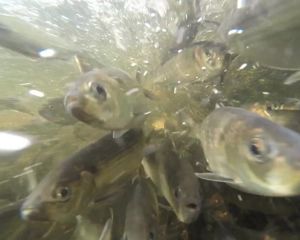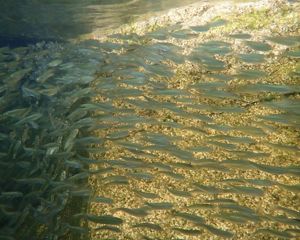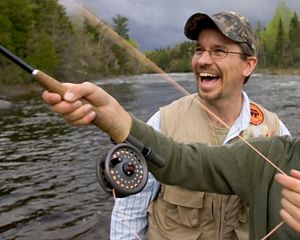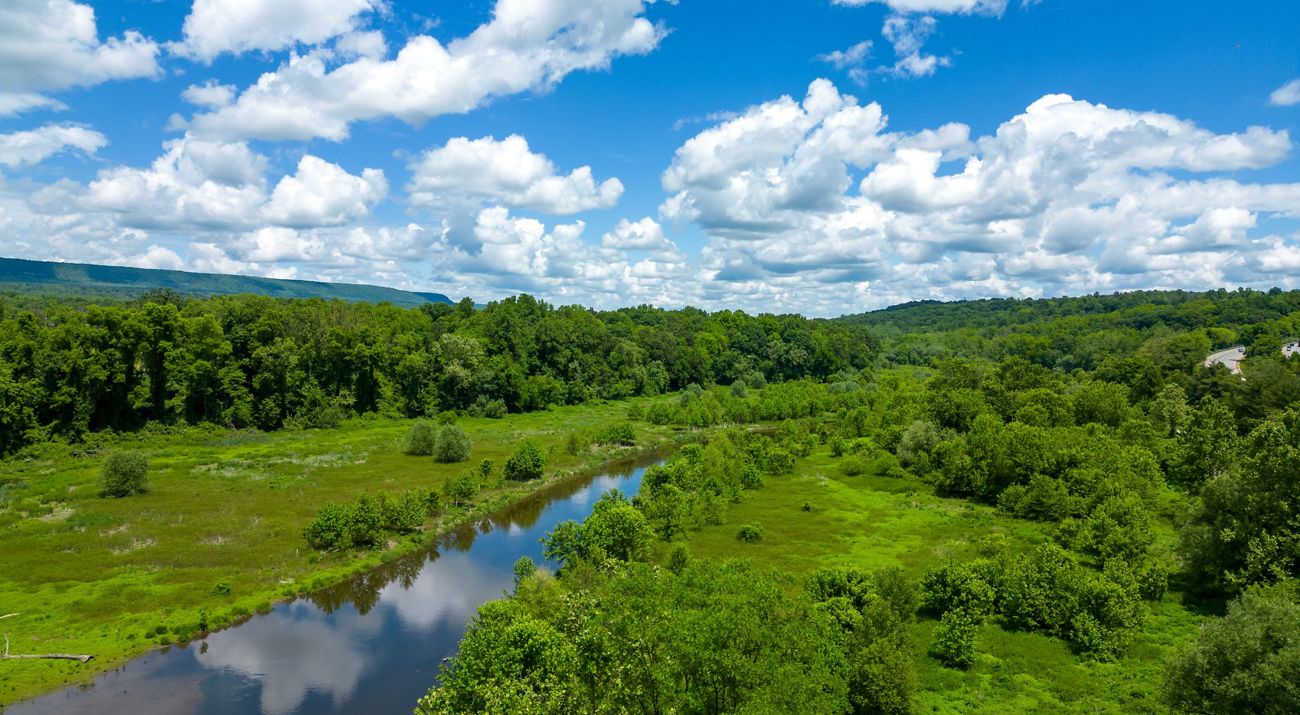
Restoring the Paulins Kill River
To safeguard precious water resources, we are working to restore our local rivers, streams, headwaters and floodplains.
Changes in New Jersey’s natural landscape from centuries of development, farming and resource use directly affect the quality of our water. Deforested floodplains convey sediment into our rivers, paved surfaces drain polluted stormwater into our streams, and dams—more than 2,000 of them—disrupt fish migration and water flow, altering the health of entire river systems.
To safeguard precious water resources, we are working to restore our local rivers, streams, headwaters and floodplains. The Paulins Kill restoration is just one example of our on-the-ground work throughout New Jersey.
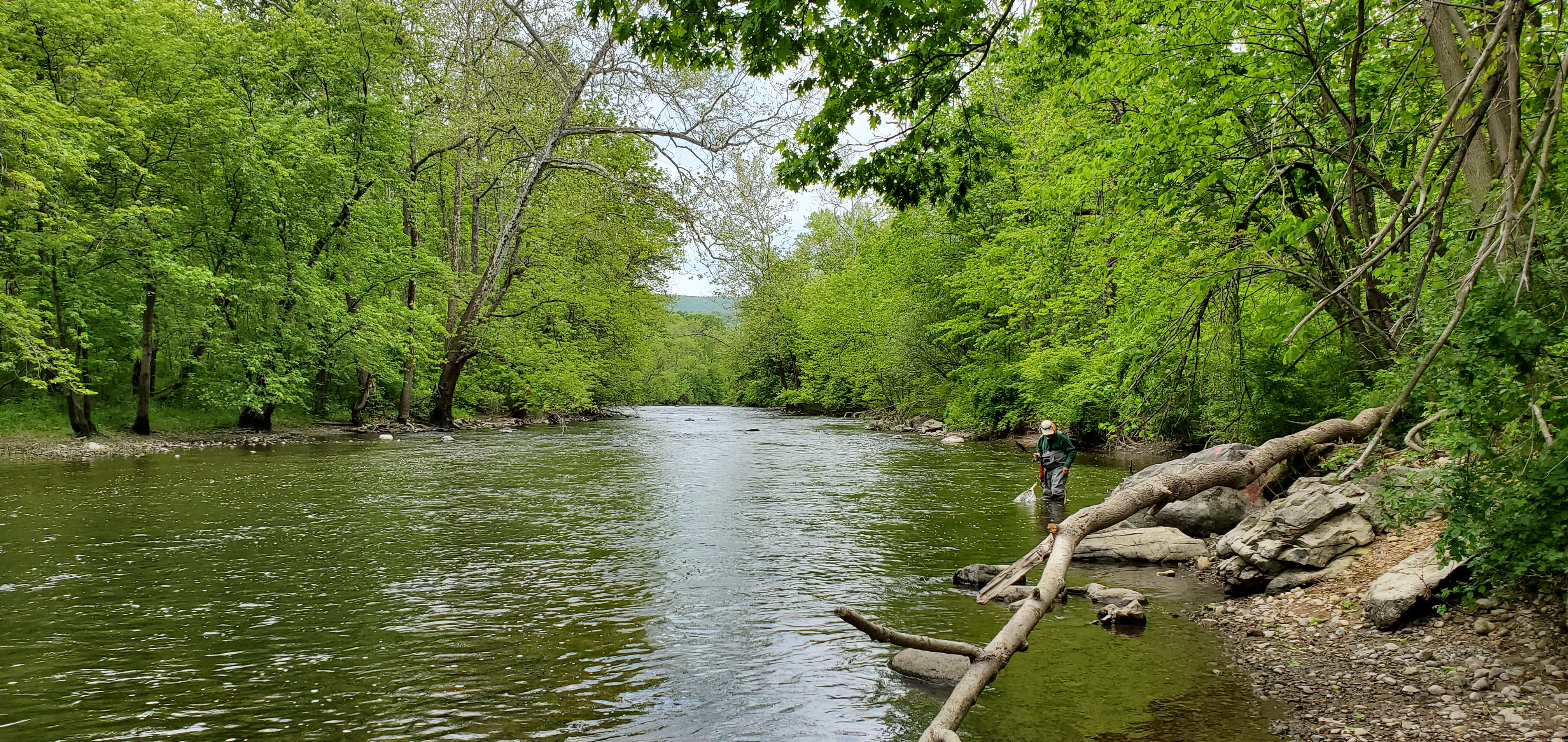
The fertile valleys and healthy waters of the more than 40-mile-long Paulins Kill have powered livelihoods and food production for more than 300 years.
Over time, activities like mining, logging, farming and development have taken their toll on the health of the Paulins Kill.
For the river to remain a viable resource for the people and wildlife depending on it, it needs some serious attention.
How do you restore a river?
Restoring a river means tackling challenges methodically and bringing stakeholders like conservation organizations, farmers, business owners and private and public landowners together to address the river’s challenges and strategically advance a shared vision to protect it.
The Nature Conservancy is leading a team that includes local organizations and public and private supporters to rejuvenate the Paulins Kill and the flow it delivers into the Delaware, which provides drinking water for more than 17 million people every day.
Remove Dams
The Nature Conservancy and partners have removed four key dams along the Paulins Kill River: the Columbia Dam and its remnant in Knowlton, removed in 2019; the County Line Dam in Stillwater, removed in 2022; and the Paulina Dam in Blairstown, removed in 2024.
The Columbia Dam and the Paulina Dam were sizable structures that impounded large areas of water, with the Columbia Dam spanning 330-ft wide and 18-ft tall, with a 32-acre impoundment; the Paulina Dam spanning 200-ft wide and 13-ft tall, with a 35-acre impoundment; and the County Line Dam spanning 230-ft wide and 4-ft tall. All of the dams had a negative impact on the river, acting as barriers to fish migration, disrupting the natural flow of the river, and decreasing the water and habitat quality for resident and migratory species.
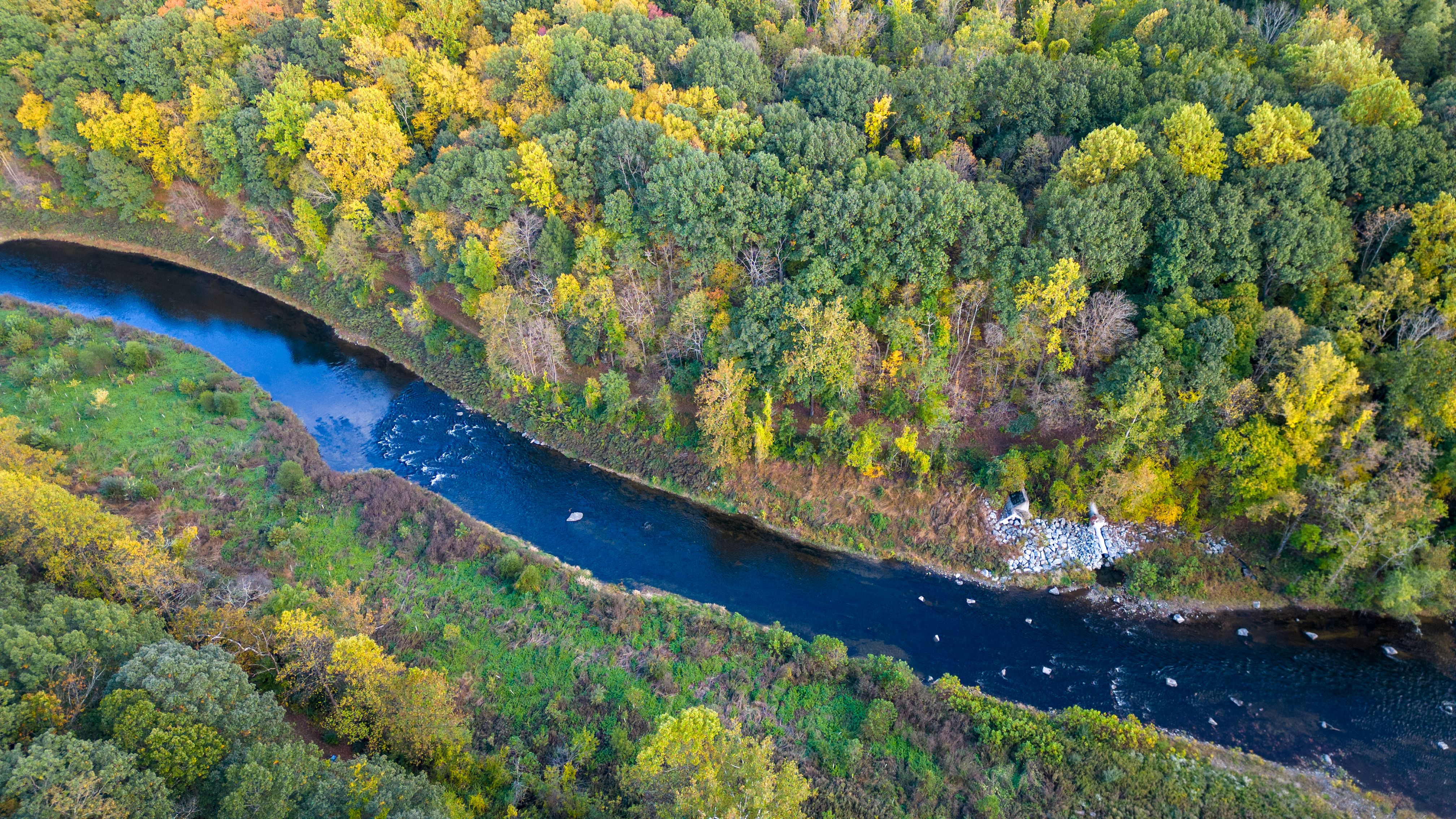
With the removal of these barriers, water quality and flow are improving, there are enhanced recreational opportunities, and 45 river miles have been reopened to spawning American shad and other migratory fish species.
Additionally, as part of our floodplain reforestation work, we have planted more than 12,000 trees in areas that used to be underwater from the Columbia Dam impoundment.
This image is an aerial view of the Paulins Kill river and the former Columbia Dam site post-restoration.
Reforest the Floodplains
Among the many challenges the Paulins Kill faces is that significant parts of its floodplain—critical land around the river’s banks—have been deforested and left without trees that help filter water, absorb flooding or cool the river for fish. We reforested 10 miles of river and, with the help of local landowners and residents, have planted more than 58,000 trees to date.
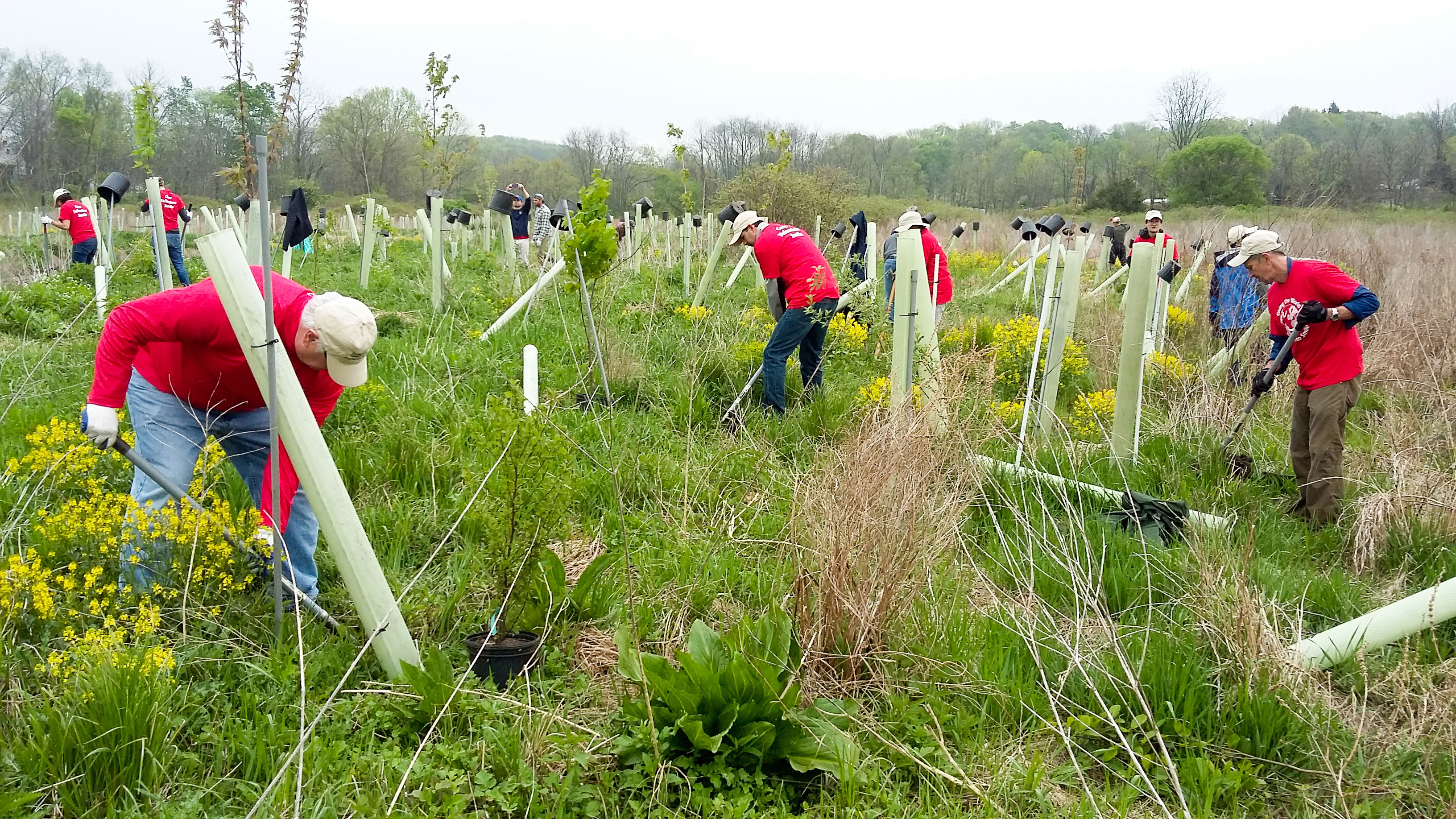
Those trees provide shade to cool water and alleviate sediment runoff with their root systems—which benefits native fish that live in the river, and in turn, the enthusiasts who fish there.
Reconnect the Headwaters
The Hyper-Humus section of the Paulins Kill Wildlife Management Area, not far from the river’s headwaters, was mined for peat for more than 75 years. More than 2.5 miles of river and floodplain were ditched and drained, creating a host of ecological challenges, including stagnating water, altered habitat and water too warm for native fish.
We are working to restore the river channel and its connection to the floodplain, which will help absorb floodwaters, improve water quality and temperature, and create a variety of recreational possibilities at the site.
Stay connected for the latest news from nature.
Get global conservation stories, news and local opportunities near you. Check out a sample Nature News email.
Measure Results
Built into our plans in the Paulins Kill is measuring how much we have improved the river’s health, to gauge how well the restoration is working. Our conservation scientists are monitoring water quality in priority areas of the Paulins Kill and using the results to set benchmarks and measure impacts of our work.
We are surveying for freshwater mussels and other important macroinvertebrate species, such as larval dragonflies, damselflies, caddisflies, stoneflies and mayflies. These species are important indicators of watershed health and river condition.
The data we collect will provide a baseline against which to compare conditions over time as our conservation projects mature. We share this data with partners and other groups working in the Paulins Kill to inform future management and conservation efforts.
Early Signs of Success
We are already observing encouraging trends in the data related to our conservation efforts in the Paulins Kill. Macroinvertebrate populations are both abundant and diverse, particularly in the lower section of the river near the former Columbia Dam site. Following the dam’s removal, water temperatures upstream and downstream have become more consistent—likely due to the elimination of the impounded area, which previously slowed the flow and allowed water to warm before cascading over the dam.
With all four removals, we have successfully documented migratory fish like American shad and sea lamprey migrating up to the farthest upstream reach on the Paulins Kill.
